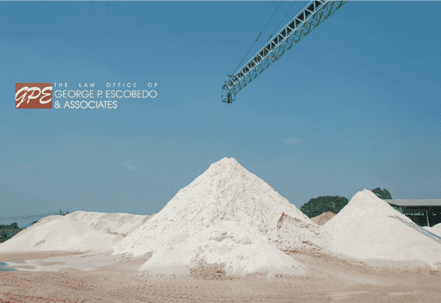Over 2 million workers per year are exposed to crystalline silica dust while working, especially in the maritime, construction, and oil and gas industries. This kind of occupational exposure frequently leads to silicosis, or a chronic, disabling lung disease caused by scar tissue in the lungs. Anywhere from 3,000 to 7,000 new cases emerge each year, with nearly 300 deaths and even more permanent disabilities. Silica is also classified as a carcinogen, which means it is known to cause cancer.
To mitigate deaths and diseases due to silica dust exposure, the Occupational Safety and Health Administration (OSHA) has developed a silica standard that requires employers to follow preventative measures, including time limits for employees who work with high concentrations of silica.
Fracking
In Texas, hydraulic fracking sites are distinctly risky, as employees work with silica dust that is almost 99% concentrated. According to OSHA, the permissible exposure limit (PEL) is 25 micrograms of silica per cubic meter, averaged over an 8-hour day. If employees are working on a fracking site, their exposure can be minimized by engineering controls and respirators, but their time in high exposure areas should be limited.
If you work in hydraulic fracking and are unaware of your employer’s exposure control plan, your employer may be in violation of OSHA’s silica standard.
Engineering Controls
Engineering controls relate directly to the equipment being used for fracking or other activities that stir up silica dust. Common tools include water delivery systems that dampen dust by providing water to the saw blade or attachments like a dust-collecting filter or vacuum.
Respirators
Depending on the location of, and the concentration of silica on your work site, you may be required to wear a respirator. This equipment should be provided by your employer and fitted especially to you. You should also be trained on how to use and maintain it.
OSHA Fact Sheets and Health Monitoring
OSHA provides fact sheets (example here) for different scenarios that may arise on a job site. Employers must follow the regulations laid out in these fact sheets and adhere to the different requirements for each task and piece of equipment.
In addition, employers must disclose the risks of silica exposure and offer medical exams to highly exposed workers.
If you work on a fracking site and have not been offered a medical exam, your employer is likely violating the OSHA silica standard.
Living with Silicosis
If you notice any symptoms of silica dust exposure or silicosis, contact your doctor right away. Silicosis is a disease that worsens over time, even after exposure has been halted.
Living with a chronic disease will change your life, and if your illness was caused by silica dust exposure, it was 100% preventable.
To reclaim your life, you need to hold your employer accountable for their negligence.
At The Law Office of George P. Escobedo & Associates, PLLC, we can help.
Call us at (210) 807-3178 to speak to our attorneyand schedule a free consultation.

